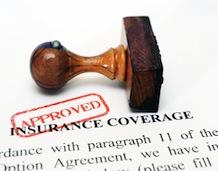Comprehensive General Liability Policies (CGL Insurance Policies)

Insurance bad faith lawyers at Mark Anchor Albert and Associates have broad experience handling comprehensive general liability insurance claims.
Businesses of whatever form that actively engage in commercial enterprises, whether for profit or not-for-profit—including corporations, limited liability companies, limited liability partnerships, general partnerships, associations, and sole proprietorships—face the risk of exposure to liability for damages incurred by non-employee third parties arising the business’ commercial activities.
Commercial risk faced by businesses is not universally encompassed by CGL insurance. It is “general” insurance, which means that it is not specific to other types of business activities that are covered by distinct types of insurance products, such as Errors and Omissions policies (professional liability policies), Director’s and Officer’s Liability Insurance, or Property Insurance, which typically is first party insurance covering losses due to damages to the insured’s property. Indeed, today there are numerous categories of specialized liability insurance products geared to particular industries or commercial activities, including pollution liability, municipal liability, aviation liability, watercraft liability, and worker compensation liability.
“Commercial General Liability” (CGL) insurance provides non-personal, or business operation-related insurance coverage to protect businesses from various common types of liability exposures:
- Product Liability: covering liability exposure arising out of products made, sold, or distributed by a business which have injured or caused damage to a customer or other person or entity;
- Premises Liability: covering liability exposure arising out of a business’s premises (whether rented, owned, or occupied);
- Operations Liability: covering liability exposure arising out of an organization’s ongoing or current work or operations, in company, plant, facility, jobsite, or other business location;
- Completed Operations Liability: covering liability exposure arising from work, apart from products manufactured or distributed by the business, that the business has finished or has been accepted or put to its intended use by a customer or other person or entity;
- Personal Injury Liability: covering liability exposure arising out of personal injuries suffered by a non-employee third party, including medical expenses for bodily injury caused by an accident on or next to the insured’s premises or due to the insured’s operations; and
- Advertising Injury Liability: covering liability exposure arising from an organization’s advertising, promotional activities, or other public statements which caused injury or damages to a person or entity due to Libel, Slander, Invasion of Privacy, Copyright Infringement, Trademark or Trade Dress Claims, Certain Misappropriation Claims, and, under older CGL policies, Unfair Competition Claims.
Coverage A under a standard CGL policy provides coverage for the insured’s liability for “bodily injury” or “property damage” caused by an “occurrence” during the policy period. “Bodily injury” is typically defined in the policy as “bodily injury, sickness or disease sustained by a person, including death resulting from any of these at any time.” “Property damage” is typically defined as, “Physical injury to tangible property, including all resulting loss of use of that property” or “Loss of use of tangible property that is not physically injured.” The property damage must be to “tangible property,” meaning that purely economic loss is not covered by typical CGL policies. “Occurrence” often is defined in typical CGL polices as “an accident, including continuous or repeated exposure to substantially the same general harmful condition.”
Coverage B under a standard CGL policy covers “Personal and Advertising Injury” caused by an injury arising out of the insured’s business due to false arrest, detention, or imprisonment; malicious prosecution; the wrongful eviction from, wrongful entry into, or invasion of the right of private occupancy of a room, dwelling or premises that a person occupies, committed by or on behalf of its owner, landlord or lessor; oral or written publication, in any manner, of material that slanders or libels a person or organization or disparages a person or organization’s goods, products or services; oral or written publication, in any manner, of material that violates a person’s right of privacy; the use of another’s advertising idea in your “advertisement”; or copyright, trademark, or trade dress violations.
There are standard exclusions from coverage under both Side A and Side B of typical CGL policies.
Side A, for example, excludes coverage for bodily injury or property damage “expected from the standpoint of the insured;” excludes coverage where the insured assumes liability in a contract or agreement, but does not exclude coverage where the insured would be liable in the absence of the contract, or where the assumption of liability occurs in an “insured contract;” excludes coverage for bodily injury to one of the insured’s employees; excludes coverage for bodily injury, property damage arising out of the discharge of pollutants; excludes coverage for bodily injury or property damage resulting from the ownership, maintenance, use or entrustment to others of an auto, aircraft or watercraft; and excludes most types of property damage.
Side B excludes coverage for Personal Injury and Advertising Injury arising from a knowing violation of the rights of another caused by the insured with knowledge that the act would violate another’s rights, material published with knowledge that it was false, and liability assumed in a contract, except for liability that the insured would have in the absence of a contract; infringement of a copyright, patent, trademark or trade secret, except infringement in an advertisement of copyright, trade dress or slogan; and pollution.






